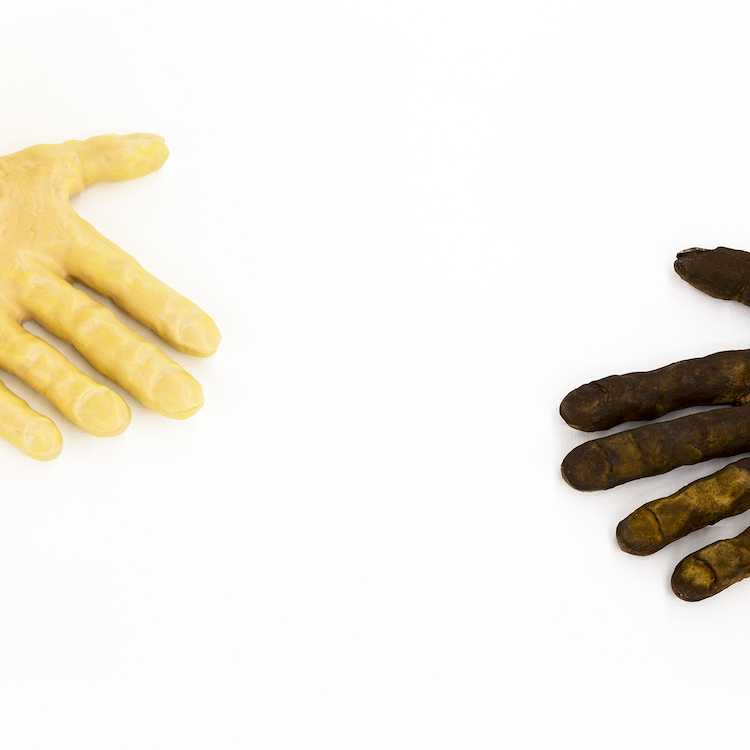Collaborative exhibition Love Is a Many Splendored Thing at Parrasch Heijnen Gallery (Los Angeles, January 27 – March 4, 2017) is a cross-generational showing of new sculpture by British artist Jesse Wine and historic works by the late California ceramist Peter Voulkos (1924-2002).


The collaboration engages ten new ceramic sculptures by Wine in conversation with five important works by Voulkos dating from 1956-1981. Together these sculptures reveal a modernist sense of lyricism that runs throughout the oeuvre of both artists. Voulkos’ work in the show comprises three iconic “stack” pieces, an early “cut out” vessel and a groundbreaking deconstructed vessel from 1956.

Second from right: Peter Voulkos, Untitled (Stack Pot), 1980, Ceramic (stoneware: wheel-thrown and slab construction), slip, and glaze. Click for larger image

Peter Voulkos, Untitled (Stack Pot), 1980, Ceramic (stoneware: wheel-thrown and slab construction), slip, and glaze, 46 x 15 x 15 inches. Click for larger image
Working in a variety of tropes and idioms, Wine engages in a range of imagery as an homage to the poetics of Voulkos’ ceramic forms. A conduit for shared ideals and pursuits, the work transcends generational separations and embraces the core sentiments found within the two artists’ varied visions.
One of Wine’s works in this show, for example, constructs a narrative alluding to the mythology of Voulkos’ oeuvre and charisma. The guitar body with a supporting human limb makes a “musician” to which a dismembered leg dances, romanticizing Voulkos’ passion as an accomplished Flamenco guitarist.

Jesse Wine, Poetry and Dream II, 2017, Glazed ceramic, 26 x 22 x 23 1/2 inches. Click for larger image

Jesse Wine, True Curiosity, 2017, Paint, sand, ceramic 30 1/2 x 21 x 23 inches. Click for larger image
Within this approach, Wine also adopts Voulkos’ well-known “Rocking Pot” form, recreating it, writ large. To Wine, this is the most radical sculpture Voulkos made, an Abstract Expressionist piece simultaneously borrowing from an Asian architectural style and upending a utilitarian approach to ceramics.

Right: Jesse Wine, Dear Peter, 2017, Glazed ceramic 20 x 29 x 35 inches. Left: Peter Voulkos, Untitled, 1956, Fired and glazed ceramic 24 x 11 x 11 inches. Click for larger image
Wine’s shifting approach to making art is an examination of identity and what it means to have, or not to have, a signature style. This echoes Voulkos’ pedagogical mantra “No rules. No rules,” and draws upon ideas of self-expression, freeing oneself from recognized process or style, and developing a unique language.

Love Is a Many Splendored Thing was the title of a lost early Voulkos work; no documentation exists, other than the title.
Text (edited) by Parrasch Heijnen Gallery.





Do you love or loathe these works of contemporary ceramic art and contemporary ceramics? Let us know in the comments.





This is a poor pairing. Voulkos’s work are strong and sophisticated, e.g., his knowledge of clay’s performance on the potter’s wheel and in the kiln, the history of pottery, etc. Wine’s figure-based sculptures display no feeling for the human body, clay or glazes. His squat vessel shapes at least echo the historical use of clay, especially in this context. Vessels and vessels would have made a better exhibition.
une pure merveille